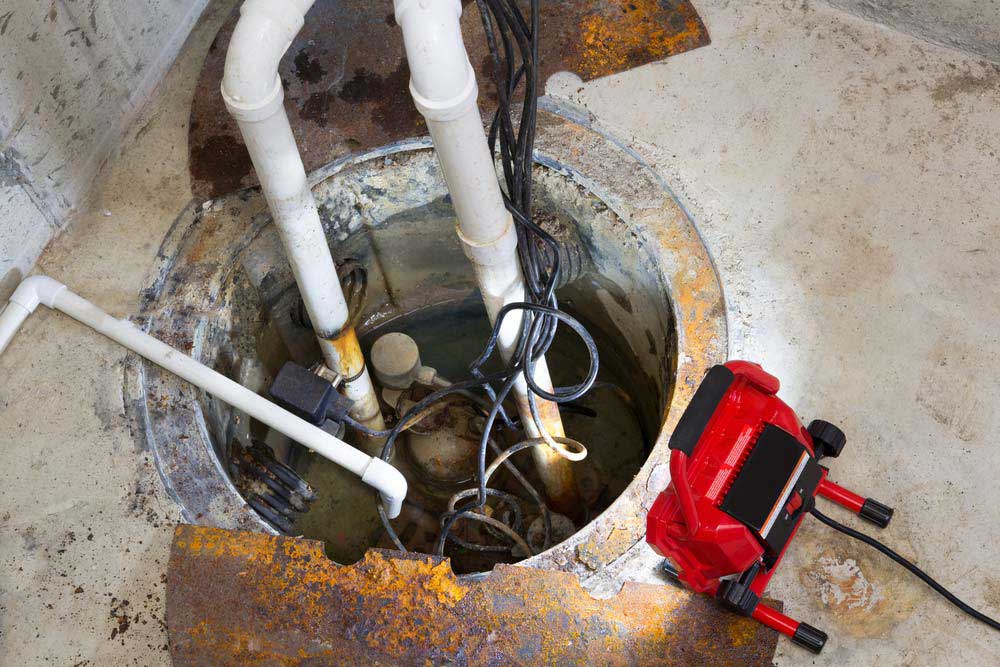Rapid Steps to Cleaning Your Sump Pump
Rapid Steps to Cleaning Your Sump Pump
Blog Article
Were you on the lookout for advice on How To Effectively Clean A Sump Pump?

Sump pumps are essential components in lots of homes, particularly in locations vulnerable to flooding or too much moisture. They help prevent water damages by successfully removing excess water from basements or crawl spaces. However, like any other home appliance, sump pumps call for regular upkeep to guarantee they function successfully when required one of the most. Cleansing your sump pump is a crucial part of its maintenance, and understanding exactly how to do it properly can save you from expensive repairs and prospective calamities.
Intro
Keeping a tidy sump pump is vital for its proper functioning and durability. Ignoring this important task can lead to obstructions, breakdowns, and eventually, water damage to your home. As a result, learning how to cleanse a sump pump is vital for house owners who count on these devices to keep their cellars completely dry and protected.
Indications of a Dirty Sump Pump
Knowing when your sump pump requires cleaning is essential for protecting against potential breakdowns. Some common indications that suggest an unclean sump pump include unusual noises throughout operation, decreased water flow, and visible particles in the pit. If you discover any of these signs, it's important to cleanse your sump pump promptly to avoid any type of additional issues.
Preparing for Cleansing
Before you start cleaning your sump pump, it's necessary to take some safety precautions. Start by shutting down the power to the pump to stay clear of any type of electric mishaps. Additionally, use suitable protective equipment, such as handwear covers and safety glasses, to safeguard on your own from dust, debris, and possible virus.
Understanding the Sump Pump
Prior to diving into the cleansing process, it's important to have a fundamental understanding of exactly how a sump pump works. Typically set up in a pit or container listed below the basement flooring, a sump pump includes several crucial components, consisting of a pump, a float button, and a discharge pipe. When water gathers in the pit, the float button activates the pump, which after that pumps the water out through the discharge pipeline, away from the building's structure.
Step-by-step Guide to Cleansing a Sump Pump
Turning off the Power
Begin by disconnecting the power supply to the sump pump to avoid any mishaps while cleaning.
Looking For Correct Functioning
Before reinstalling the pump, carry out a quick examination to ensure that the float switch turns on the pump appropriately. Pour some water into the sump pit and observe the pump's procedure. If every little thing is functioning properly, you can reconstruct the pump and reconnect the power supply.
Removing Particles and Dirt
Use a container or an inside story to get rid of any kind of visible particles, dust, or sediment from the sump pit. Dispose of the particles properly to stop it from clogging the pump or the discharge pipe.
Cleansing the Pump and Float Change
When the pit is free from particles, meticulously eliminate the pump from the pit. Evaluate the pump and the float switch for any indications of damage or wear. Make use of a soft brush or cloth to clean the surfaces and remove any type of built up crud.
Flushing the System
After cleansing the pump and float switch, purge the sump pit with clean water to get rid of any continuing to be dust or debris. This will certainly aid guarantee that the pump operates efficiently and efficiently.
Maintenance Tips to Maintain Your Sump Pump Clean
Along with routine cleaning, there are several maintenance tips you can comply with to maintain your sump pump in optimal problem:
Final thought
Cleansing your sump pump is a critical facet of its upkeep and guarantees that it operates properly when you require it one of the most. By complying with the steps described in this guide and incorporating regular upkeep into your regimen, you can prolong the lifespan of your sump pump and protect your home from water damages.
6 STEPS ON HOW TO CLEAN A SUMP PUMP PROPERLY
UNDERSTANDING SUMP PUMPS
Your sump pump plays a crucial role in protecting your home by managing and removing excess water. It primarily functions as a “shield”, guarding your basement against the damaging effects of water accumulation. The pump is housed in a sump pit in the lowest part of your basement, and its job is to pump out any water that collects there.
During heavy rainfalls or when snow melts rapidly, water can infiltrate your basement, posing potential risks like flooding, structural damage, and harmful mold growth. Here, the sump pump springs into action, pumping out the intruding water and directing it away from your home.
SAFETY FIRST
Before cleaning, remember to prioritize safety. Disconnect the sump pump from the power source to prevent any accidental electric shocks. Also, wear sturdy gloves to protect your hands from any sharp or dirty components within the pump.
REMOVE THE SUMP PUMP
After ensuring your safety, the next step is to remove the sump pump from its pit. Doing this might require careful maneuvering as you don’t want to damage any pump components. Once removed, clean the sump pit to remove any accumulated debris or sludge.
INSPECT THE PUMP
Inspect the pump for any visible signs of wear or damage. Check the power cord, float switch, and impeller housing. If any components look worn out or damaged, consider replacing them to ensure optimal performance.
CLEAN THE PUMP
Thoroughly clean the pump with warm, soapy water. Make sure to rid it of any dirt, gravel, or other debris that might impede its performance. You can use a toothbrush to clean the small, hard-to-reach parts of the pump.
REINSTALL THE SUMP PUMP
Reinstall the pump into the sump pit Make sure it’s positioned correctly to remove the water effectively Once it’s back in place, reconnect it to the power source TEST THE PUMP
Finally, pour some water into the pit to ensure the pump works correctly. It should start automatically and begin pumping out the water; if it doesn’t, check the power source and the positioning of the pump.
Remember, while cleaning your sump pump is an essential part of home maintenance, hiring a professional plumber for a thorough inspection and cleaning at least once a year is also important. This will ensure that your pump is in optimal condition, ready to protect your home from potential water damage.
BEST PRACTICES FOR CLEANING SUMP PUMP DISCHARGE PIPES
Regular Inspection: Regularly inspect your discharge pipes, especially during heavy rainfall or snowmelt periods. Look for any signs of blockage or damage. Early detection of problems can prevent serious issues down the line. Periodic Cleaning: Over time, sediment and debris can accumulate in the discharge pipes, impeding the flow of water. Regular cleaning helps keep the pipes clear and functioning efficiently. You can use a high-pressure water jet to effectively clean the pipes. Insulation During Winter: In colder climates, discharge pipes can freeze, blocking the outflow of water. Protect your discharge pipes from freezing temperatures by insulating them with foam pipe insulation. This will ensure the sump pump can continue to discharge water even in freezing conditions. Proper Positioning: The discharge pipe should be positioned to direct water away from your home’s foundation. Improper positioning can lead to water seeping back into the basement. Ensure the pipe is long enough and angled correctly. Installation of a Check Valve: A check valve prevents water from flowing back into your sump pit after the pump has pushed it out. Installing a check valve helps maintain the efficiency of your sump pump and reduces the risk of flooding. Minimize Pipe Turns: Every curve or turn in the discharge pipe can decrease the efficiency of water flow. By minimizing turns and bends in your discharge pipe, you can increase the efficiency of your sump pump. https://www.fullspeedplumbing.com/how-to-clean-a-sump-pump-properly9999/

As a keen person who reads about Steps to Cleaning Your Sump Pump Properly, I figured sharing that segment was essential. If you please take the opportunity to promote this blog post if you appreciated it. We cherish your readership.
Book Services Report this page